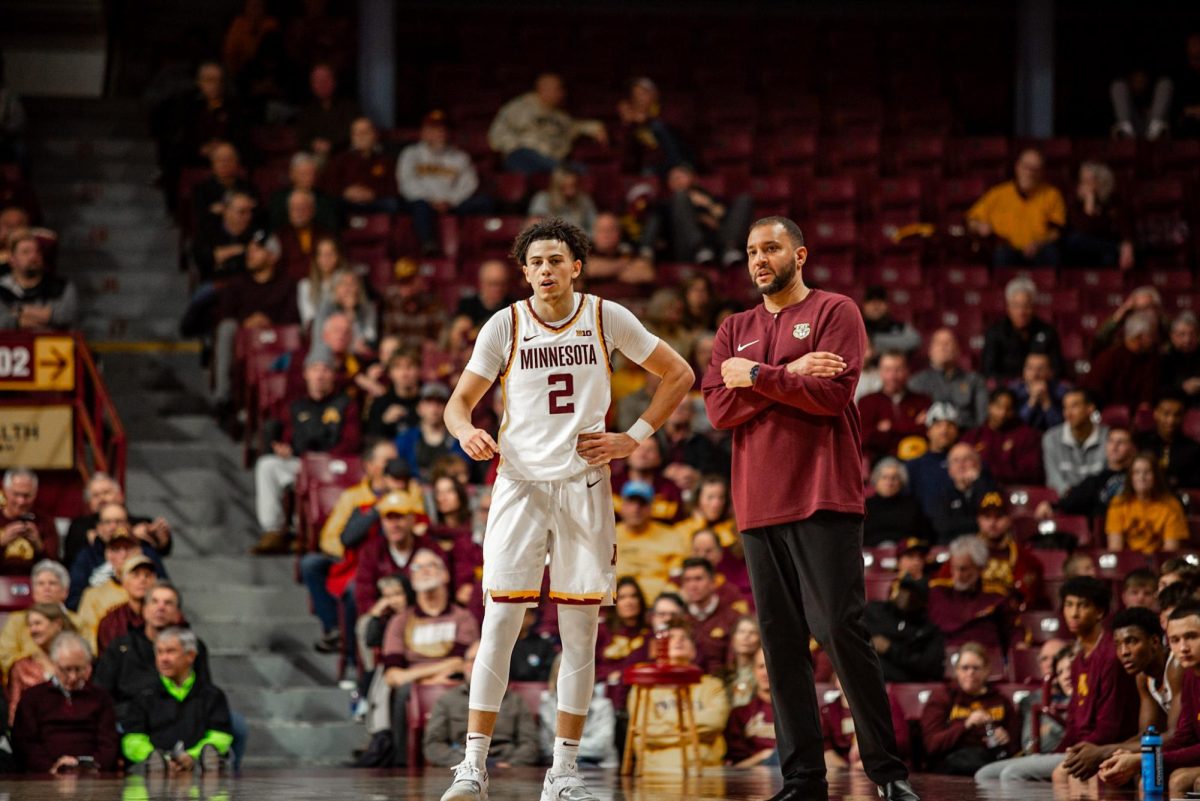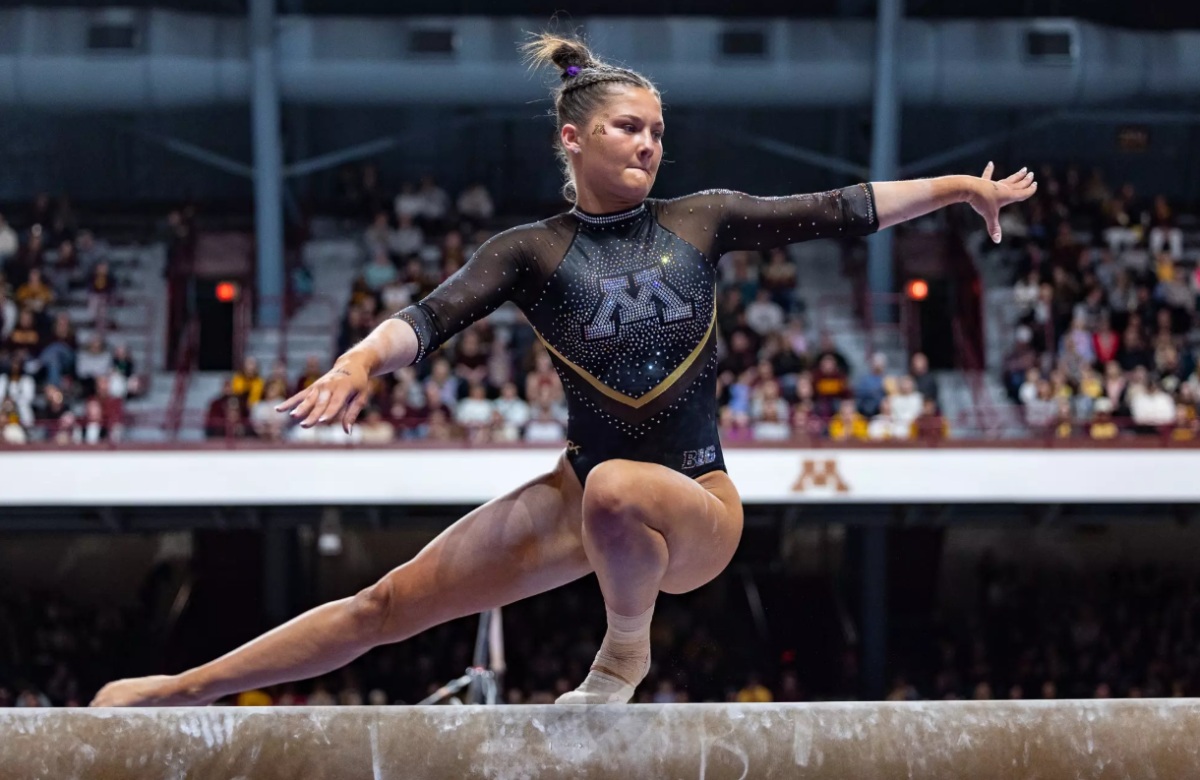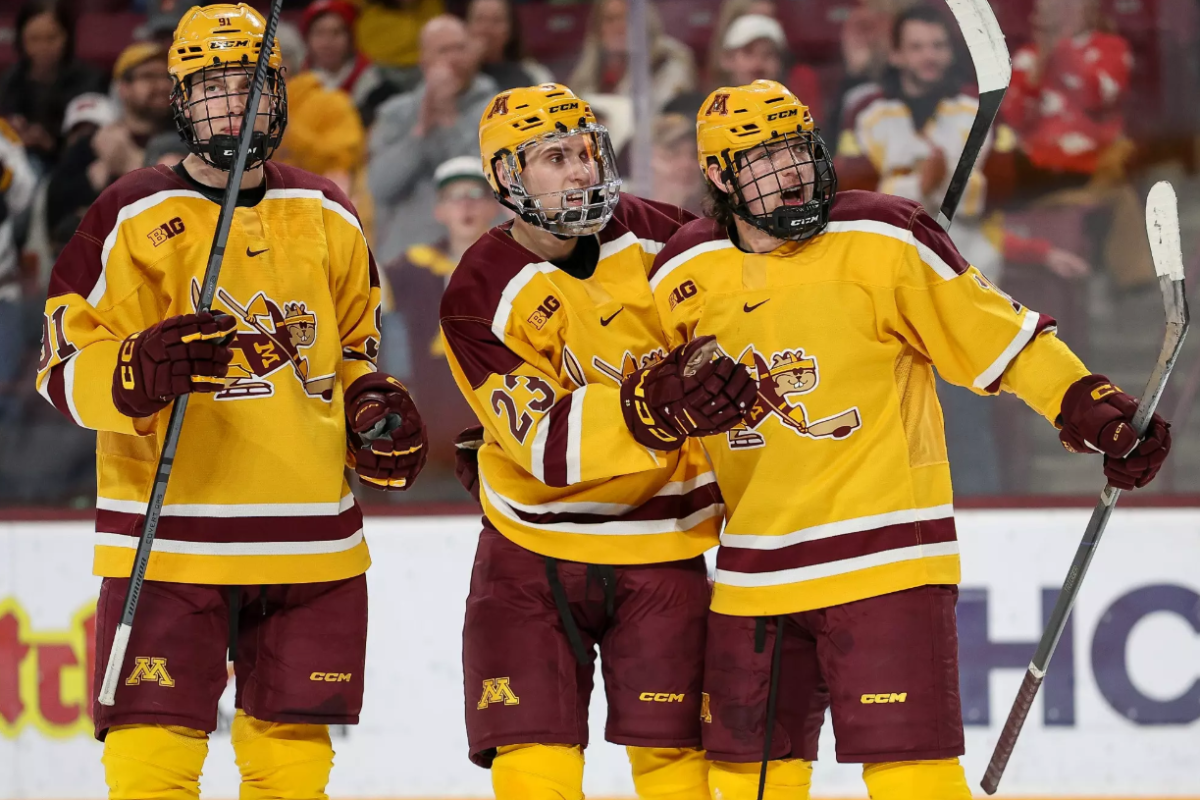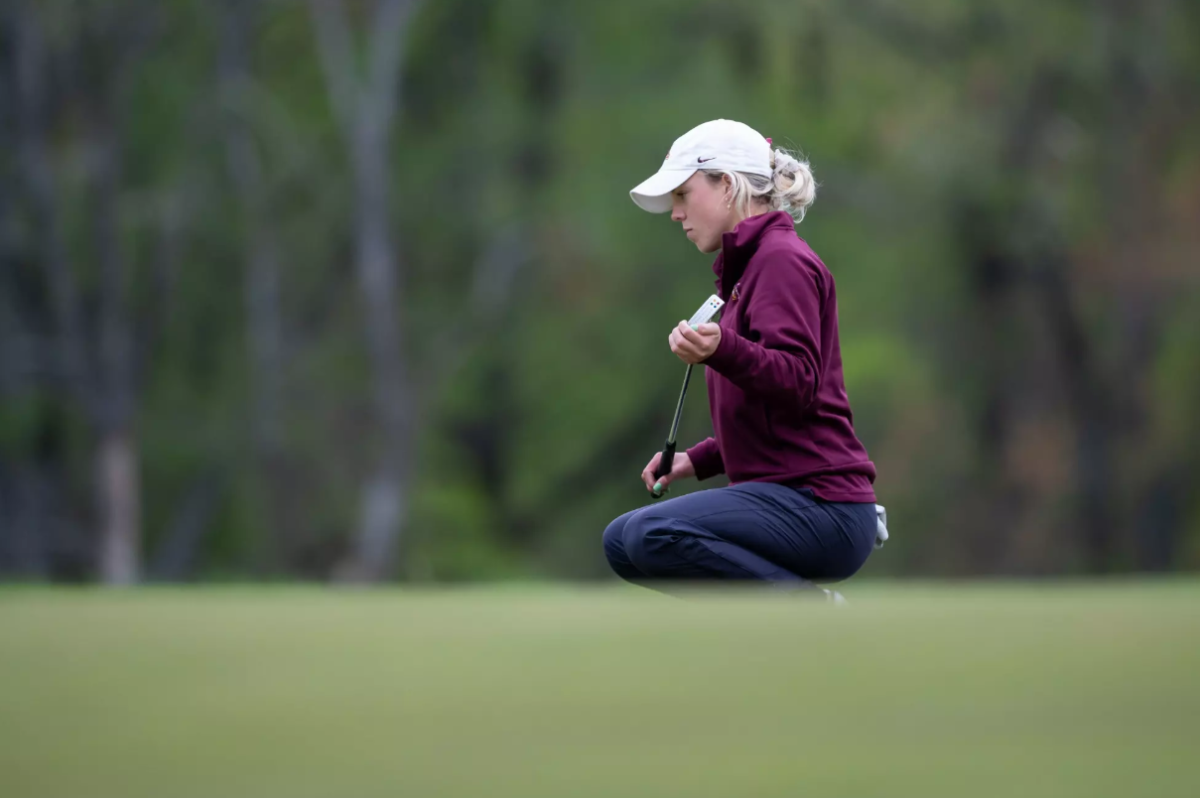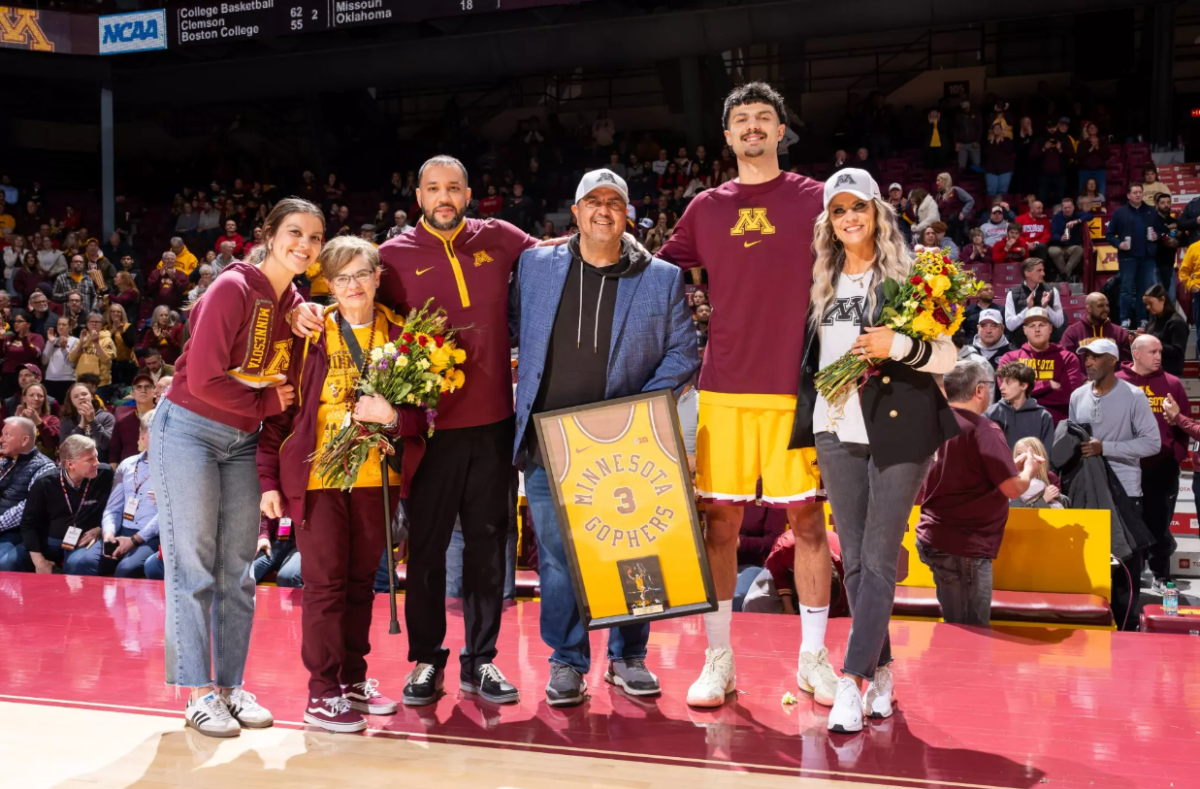The picks eventually turned into rounds and then a day for Greg Eslinger. Finall,y at the end of Sunday, in the sixth round of the NFL Draft, the Outland Trophy-winning Minnesota center was selected by the Denver Broncos.
His former linemate and former All-American guard Mark Setterstrom had to wait a round longer until his name was called by the St. Louis Rams.
They are two of the most decorated offensive linemen in Minnesota history, and they both had to wait until the tail end of the draft to be selected.
What does this mean? Maybe NFL-talent evaluators misread the players and their relative lack of size, which wasn’t a problem when playing in the Big Ten and will be compensated for in the NFL by their speed and cut-blocking.
Or maybe the reason for the success of the Minnesota rushing attack isn’t who is executing on the runs and blocks, but the system itself.
Sure, Laurence Maroney, drafted in the first round Saturday, is a talented runner. But even before Maroney and Marion Barber III were featured in the Gophers backfield and the offensive line was filled with All-Americans, Minnesota was having success rushing the football.
Terry Jackson II rushed for 1,317 yards in the 2002 season. The last he was heard from on the football field, he ran for 442 yards with Division I-AA Southern Illinois in 2004.
In 2000 Tellis Redmon rushed for 1,368 yards, then another 1,091 in 2001. Redmon eventually was pushed aside by Barber, went pro after his junior season and went undrafted. He has yet to appear in an NFL game through four seasons of being constantly signed and then released by the Baltimore Ravens.
Redmon’s predecessor, Thomas Hamner, also had success carrying the ball. Hamner tallied seven 100-yard rushing games in his Minnesota career and gained 1,426 yards in 1999. The most notable event of his tenure with the Philadelphia Eagles came when he was charged with animal cruelty in 2001.
And before Eslinger and Setterstrom, just three offensive lineman who blocked for those 1,000-yard rushers were drafted by the NFL – center Ben Hamilton and tackle Adam Haayer in 2001 and tackle Matt Anderle in 2002. Just one, Hamilton with Denver, has had NFL success.
Granted, there is a difference between the set of skills needed to succeed in the NFL and to succeed in the Big Ten.
But with the success that has kept coming from the Minnesota running game, there’s every indication that the Gophers will be able to run the football in 2006, even without Maroney, Eslinger and Setterstrom.
– Matt Anderson welcomes comments at [email protected].


